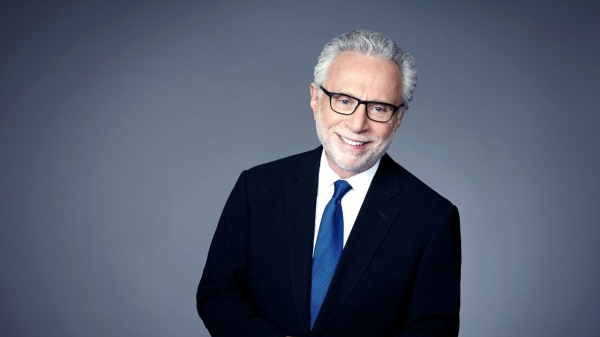Paying the price: ASU researchers say health care waste is worse than reported

In 2017, health care spending in the United States grew to $3.5 trillion, or nearly 18 percent of the country’s gross domestic product.
But not all of this spending actually helps make us healthier. In fact, it is estimated that one-third or more of the country’s health care spending — or more than $1.1 trillion — does not lead to better health outcomes.
Two researchers from the College of Health Solutions at Arizona State University are now suggesting that even this eye-catching number likely underestimates the extent of the problem.
In a new research paper published in the American Journal of Preventive Medicine, Mac McCullough and Matthew Speer — along with a team from the UCLA Fielding School of Public Health led by Jonathan Fielding and Steven Teutsch — examine the true extent of health care waste in the United States.
The paper is part of a broader collaboration between the research teams at ASU and UCLA. Together, they are exploring the causes of and solutions to health care’s waste problems.
Editor's note: Answers are a collaborative effort of McCullough and Speer.

Mac McCullough
Question: What is health care “waste”?
Answer: Health care spending that does not actually make us any healthier can be considered “waste.”
When a patient undergoes repeated tests because information wasn’t shared between health care providers, or when a person visits a hospital for a condition that could have been prevented with a simple intervention, it is considered waste. Health care waste costs all of us because we pay more for our own health insurance, or more in taxes, to support programs such as Medicare and Medicaid.
Our health care system spends untold sums to treat health conditions that could have been prevented altogether had we done a better job of addressing the non-clinical needs that drive health outcomes. These include factors outside the clinical setting that impact a person’s ability to be healthy — such as reliable transportation, adequate housing, clean air and water, or access to healthy food.
In our paper, we use the example of a patient with congestive heart failure whose medical condition was aggravated by the strain of a hot summer day. The cost of this patient’s visit to the emergency room would easily exceed $50,000, when a $200 window air-conditioner installed in her apartment could have prevented the episode altogether.
But the system isn’t set up to encourage these often simpler, more affordable forms of care, such as installing a working air-conditioner, providing transportation to a doctor’s visit or performing mold abatement.
It is unquestionably a positive thing that there are life-saving treatments available. At the same time, it is not the mark of a well-functioning system that there are mechanisms in place to pay tens of thousands of dollars for care, but fewer mechanisms in place to pay a few hundred dollars to avoid hospitalization altogether.
Our work aims to shine a light on these misalignments with the ultimate goal of reducing wasteful spending so that we can ensure that the spending we’re already doing can have the greatest impact on health outcomes.

Matthew Speer
Q: Is anything currently being done by health care providers, insurers or governments to tackle waste that results from non-clinical factors like housing, transportation, or access to healthy food?
A: The rising and unsustainable cost of health care in the United States has led stakeholders at every level to prioritize how to address wasteful spending.
States are beginning to introduce ways of allowing programs like Medicaid to pay for the kinds of services highlighted here, such as safe housing, reliable transportation to health visits, and more. Initially, these programs are targeting fairly limited sets of services — mainly those that have strong and consistent evidence linking them with better health outcomes and cost savings.
Health care providers also play an important role as advocates for the unmet social needs of their patients, which can later translate into poorer health outcomes. However, far more work needs to be done if we are to curb health care waste resulting from missed non-clinical prevention opportunities.
Q: Whose responsibility is it to support non-clinical prevention opportunities? In the future, could insurance companies be expected to cover costs related to things like transportation and housing?
A: Clinical preventive services, such as vaccinations or disease screenings, are regularly evaluated by the United States Preventive Services Task Force (USPSTF), and a key provision of the Affordable Care Act requires that insurance plans cover their recommended services. But, the USPSTF is not charged with considering all of the non-clinical preventive services that impact our health.
Likewise, housing agencies and schools are usually not equipped to prioritize health care in their own budgets. In many ways, we tend to fund and then evaluate public programs in silos.
From a narrow perspective, it may not seem logical for health insurance companies to pay for a taxi ride. But the evidence is building that there are specific times when doing this can yield better outcomes at lower costs.
It stands to reason that the more we are able to holistically view our health and social services, the more synergies we will be able to identify. As a result, it will likely require the joint efforts of these stakeholders, governmental agencies and all other health care organizations to realign the incentives of our system and collectively shoulder the responsibility for upstream prevention.
Top photo courtesy of Quince Media via Pixabay.com
More Law, journalism and politics

CNN’s Wolf Blitzer to receive 41st Walter Cronkite Award for Excellence in Journalism
Wolf Blitzer, the longtime CNN journalist and anchor of “The Situation Room With Wolf Blitzer,” will accept the 41st Walter Cronkite Award for Excellence in Journalism, Arizona State University has…

Cronkite School launches Women Leaders in Sports Media live-learn program
Women in a new sports media program at Arizona State University got a solid game plan from a sports veteran at an Aug. 20 welcome event.“Be humble, be consistent and be a solver,” Charli Turner…

ASU center to host the Pursuits of Education and Excellence Symposium
The Center for the Study of Race and Democracy (CSRD) at Arizona State University is introducing the Pursuits of Education and Excellence Symposium as part of an ongoing initiative to commemorate the…